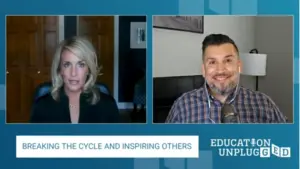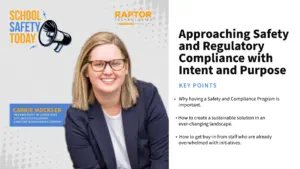A Virtual Learning Extension for Students Without a Long-Term Strategy is Simply Access
Virtual learning flourished in the K-12 space during the pandemic. Many of these online programs continue today and are doing their best to sure up student learning loss caused by three years of interruptions. But are online tools enough? Do teachers and students have the training they need to utilize edtech in a way that makes a learning difference? What’s the strategy?
Texas Governor Greg Abbott recently instructed the Texas Education Agency (TEA) Commissioner Mike Morath to waive certain requirements, enabling school districts and open-enrollment charter schools to extend virtual instruction for students in grades 3 through 12 via the Texas Virtual School Network (TXVSN) for the upcoming two school years. This decision comes in response to the recognition that many Texas parents find virtual instruction the most suitable educational method for their children. As a result, the Governor aims to ensure continuity in virtual education until establishing a more permanent solution in the 2025 legislative session. Under the current law, schools can offer virtual instruction through various statutes, with one such statute allowing full funding for students enrolled in local virtual learning programs via TXVSN. With the TEA’s waiver authority, schools offering full-time virtual instruction will receive full funding for each student who successfully completes the school year, and the TEA will guide school districts across the state to continue their virtual instruction under TXVSN’s authority.
The question remains; is this extension of virtual learning an adequate solution to ensure quality education amongst the Texas grades 3-12 populace? Where do the relationships between teachers and students intersect with this plan, and do they have the proper training to utilize edtech effectively?
Doug Roberts, Founder and CEO of the Institute of Education Innovation, suggests perhaps it’s time education asked more of its edtech tools.
Doug’s Thoughts:
“I think you’re missing the point if you’re trying to position virtual and hybrid education as something that is brand new just when the pandemic started. What we learned when the pandemic started was that our virtual, hybrid instructional infrastructure was not remotely ready for the task. And then you saw a lot of investment go into getting some of these solutions ready for the task.
The question you should be answering is, yes, about learning loss or learning interruption and how we can overcome it. But the answers to that have not changed because of the COVID pandemic. The answer to that is always going to be about teachers and students and the relationships that teachers build with students and giving them access to high-quality instructional materials.
We’ve been asking whether educators are trained to make the most of edtech and online learning tools forever. And we should continue to ask that question. We’ve been asking this question about are educators trained on how to make the most of edtech and online learning tools forever. And we should continue to ask that question. But I would flip the question back the way one of my early mentors and one of my favorite people I’ve ever worked with, Larry Berger, founder of Amplify, always used to say, we should be asking the edtech tools and solutions to be better at school and make it so that we don’t need a ton of training to be able to implement these solutions.
But look, superintendents are out there fighting for equitable access to a good education for all their kids. And yes, virtual and hybrid education solutions should be part of that. They create an opportunity in districts with smaller enrollment or lower general overall resources to have access to things like singleton courses. You know, if you’re in a rural district and have three kids who want to take APR, you can’t hire a full-time APR teacher, but you can now access APR through one of many virtual and online providers.
I think this is more of a gradual march and evolution than a quick fix that we should look at because we had a global pandemic. And you know, the solutions will always come down to great teachers building relationships with kids. And we’re always going to have a problem. Well, we continue to have a problem. Hopefully, someday, we’ll not have a problem with inequitable access to resources in districts with a high property tax base versus districts with a low property tax base and federal government; state governments cannot step in and do enough to close that gap. And that creates the situation that we’re in as a system.”
Article by James Kent.







